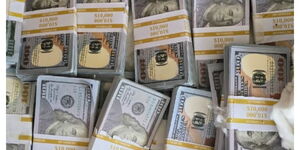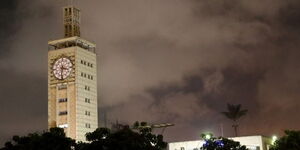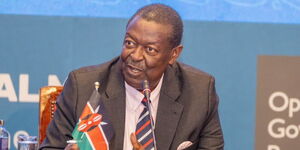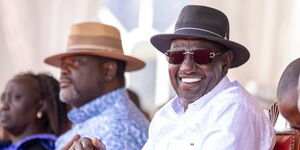In the last couple of years, the government has made efforts to erode seconds hand vehicles from the Kenyan market and promote local assembly. This has been done through tax incentives to local assembly plants.
On July 12 this year, President Uhuru Kenyatta announced that the government was setting up the National Automotive Council to develop policies that will promote the country's automotive assembly sector.
Uhuru's efforts are part of initiatives that date back to the 1980s when Kenya's first locally vehicle was launched by the late President Daniel Arap Moi. Kenyans.co.ke takes a look at three locally assembled vehicles and their costs.
Nyayo Pioneer One
In the early 1980s, after being inspired by the growth of Singapore, Moi challenged the University of Nairobi, in particular the Civil engineering department, to assemble the country's first car.
Consequently, after conducting research, a team of engineers developed the Nyayo Pioneer car - a white saloon which had all its components assembled in the country.
Their efforts saw the car launched in 1985 and President Moi was impressed by the progress. He challenged the engineers to produce more vehicles for the Kenyan market. The team went ahead to develop prototypes for Nyayo series 2, 3 and 4 - which were pickup trucks.
However, the projects failed to take off with government's interference being blamed for the collapse of the project. Reports indicated that some government officials were pushing to have the engineers focus more on the pickups - an idea that was opposed by the engineers. One of the pickups failed to start during its launch.
After the government shut down the project, it was reported that Moi invested Ksh668 million in the project.
Despite not being sold to the public, the government intended to sell the cars at an estimated cost Ksh1 million at the time of production.
Mobius 2
In 2015, Mobius Motors launched the first generation of their locally assembled vehicle for the Kenyan market.
The vehicle, famed as Mobius 2, are SUV in make. The company stated that it was targeting Kenyans living in rural areas given the terrain in most parts of the country.
The vehicles are still in production at the manufacturing plant based in the capital city.
"Mobius utilises internationally recognised quality controls throughout the production line to build each vehicle to world-class lean manufacturing standards," Mobius states on its website.
The Mobius 2 retails from Ksh1.5 million to Ksh1.9 million depending on the model.
Following the success of the Mobus 2, the company launched the Mobius 3 which is retailing at Ksh3.9 million.
Volkswagen Polo Vivo
In 2016, Uhuru launched the first Volkswagen production plant in Thika, Kiambu county, which saw the Head of State test drive the first Volkswagen Polo Vivo model made in the country.
The saloon car is a five-seater and was valued at Ksh1.65 million at the time of the launch.
However, the price has gone up over the years and is currently estimated to cost Ksh2.5 million. In 2018, the company stated that it had sold 104 vehicles since starting production locally.
During the launch, Uhuru stated that the company would help revolutionise the car production industry in the country.
“We have adopted this policy because we know that industrialization is the surest way to the destination we seek to achieve, that of a prosperous Kenya. A Kenya that makes the best use of the energy and enterprise of our most important asset, our young people,” Uhuru stated then.












